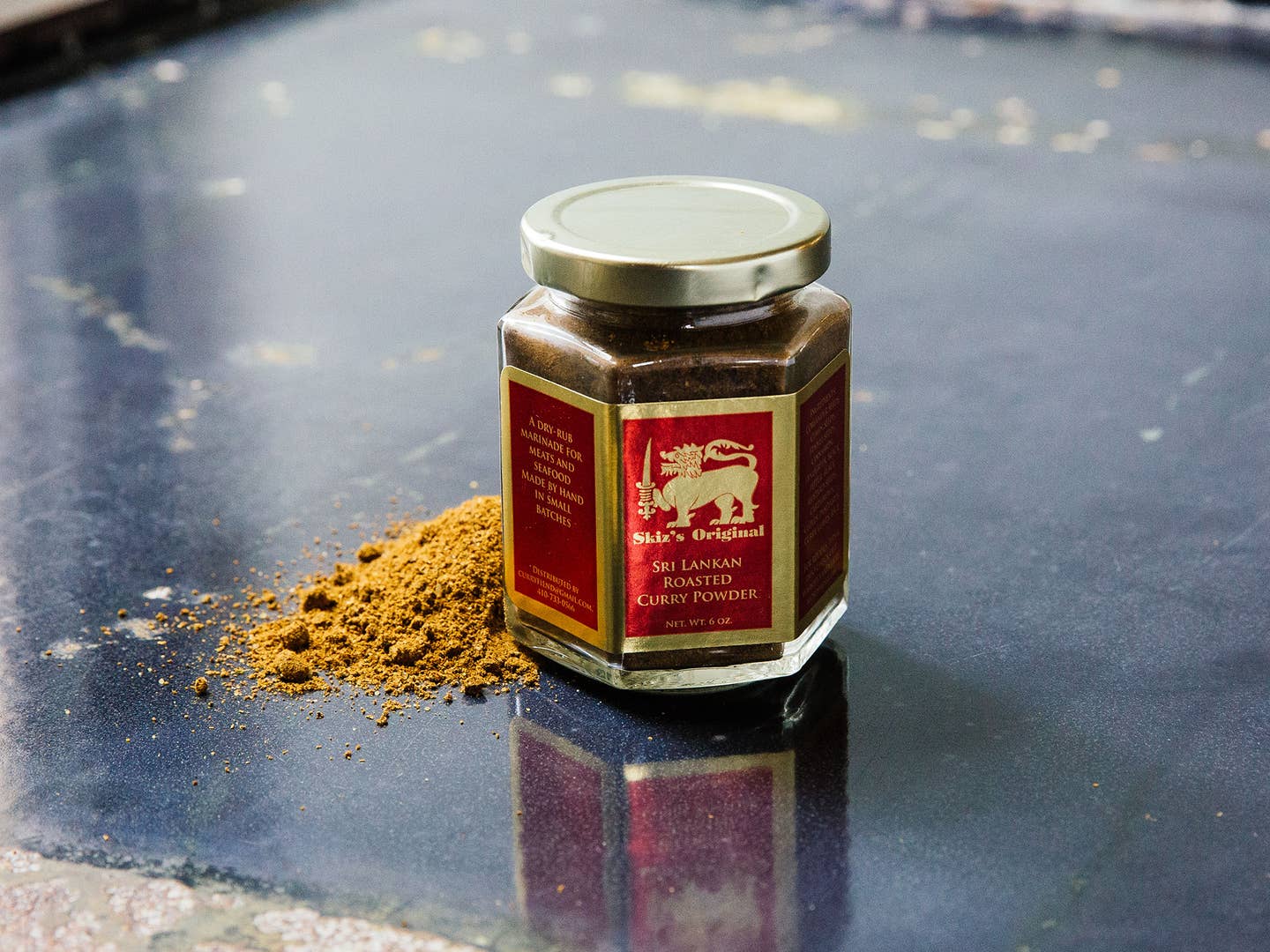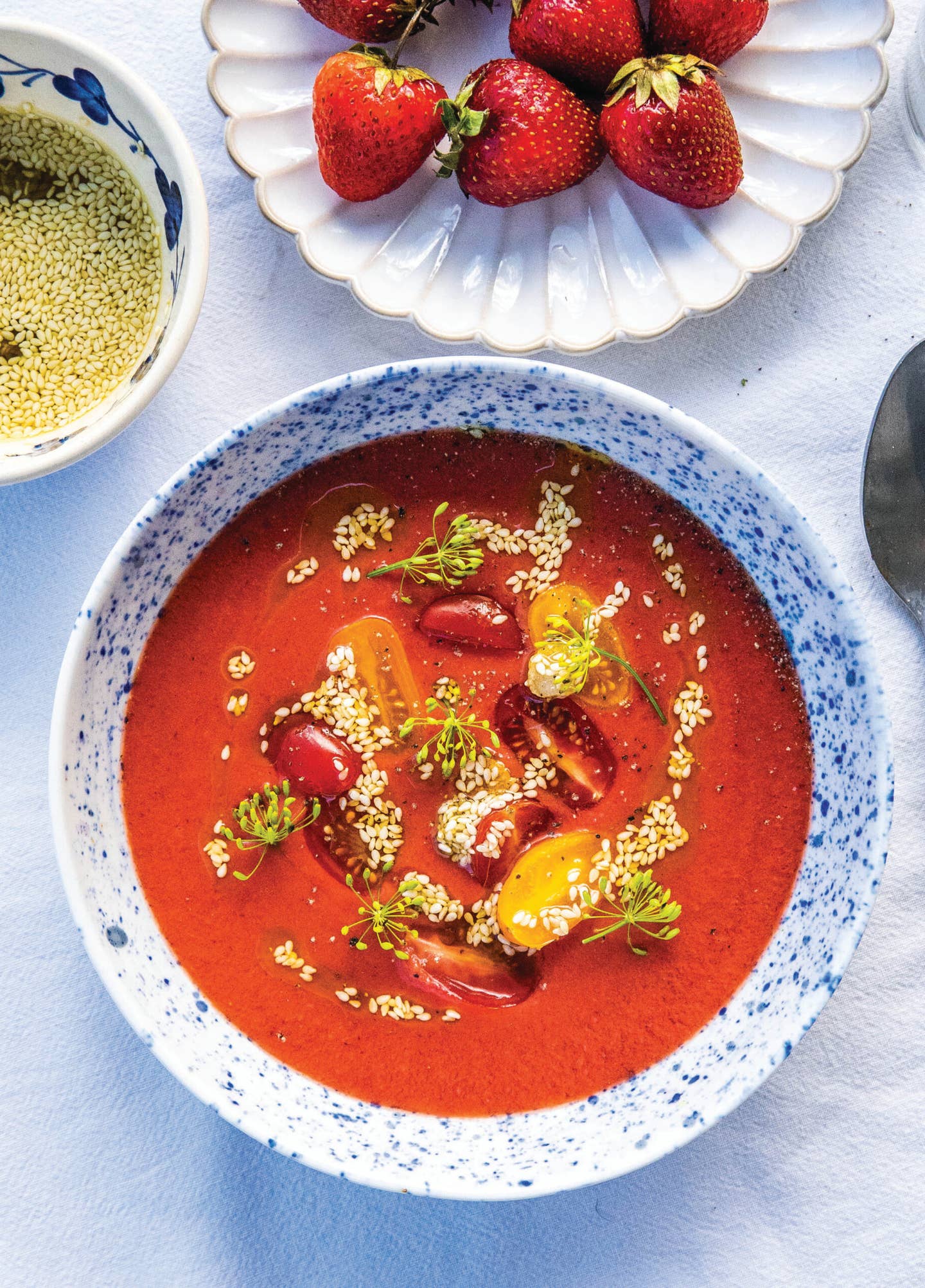
The stewy, spice-laden dish known as curry has many manifestations—from its pungent blueprints in India, to the coconut-laden soups of Thailand, to Jamaica’s fiery braises laced with scotch bonnet peppers, thyme, and allspice. But there’s nothing quite like Sri Lankan curry. I should know; I grew up eating it.
Sri Lankans curry everything, from the usual suspects—pork, beef, chicken, and seafood—to unlikely ones such as cashew nuts, pineapple, mangoes, and even banana blossoms. It's no wonder we often call our cuisine "rice and curry."
We have so many different types of curries, in fact, that we’ve developed a color-coding system for them: red, marked by a preponderance of chilies, are the hottest; black are made with an almost burnt shredded coconut base; yellow are tinged with turmeric; and white, the mildest—usually a baby’s first curry—are heavy on the coconut milk.
But the most prominent curry in the Sri Lankan kitchen is brown curry, used for all kinds of meat and seafood and made with a potent roasted spice blend. While many curry preparations call for toasting spices in a dry pan or some fat to activate their essential oils, few exhibit the almost-scorched, multifaceted pungency of Sri Lankan brown curry.
To achieve that umami intensity, it’s key to roast the spices individually. Since different spices have different burning points, each is best brought to the brink on its own.
I remember watching my aunt’s cook, Leela, carefully roast spices one by one over the fire until they released their signature aromas. She would then pulverize them together on a rectangular grinding stone, slowly adding water until the mixture became a thick paste. In the absence of such heavy equipment, I simply run my spices through a dedicated electric grinder to produce a rich, coffee brown powder. When sautéed in coconut oil with garlic, ginger, chilies, onions, and fresh curry leaves, and then simmered in coconut milk, the resulting curry is sublime.
Measure everything out first, placing each ingredient on its own ramekin or prep bowl. Use a wide pan like a wok for roasting the spices, and be sure to get it hot first. Then toss each ingredient in the wok with a spatula, keeping the contents moving to make sure nothing burns, but turns deeply aromatic and a few shades darker in color. Remove to a plate to cool and add the next one. When everything is cooled use a dedicated coffee-grinder to make the curry powder. Sift it and re-grind to a fine powder if necessary. Once ground, the powder will keep at full potency for months.
Just as important as the roasting technique is the selection of spices themselves. Here's a typical mix I use: coriander, cumin, fennel, turmeric, black peppercorns, black mustard seeds, cardamom, clove, cinnamon, fenugreek, curry leaves, pandan leaf, and raw rice (for texture as well as roasted flavor). The ones you can't find at a common supermarket will always be available at Indian groceries, though pandan leaf may be harder to find.
It'll be easier to find, though, than a quality Sri Lankan curry powder, as none of the brands available in the U.S. do true Sri Lankan curry justice. I wound up making my own to sell for those who don't want to go through the trouble. But if you're willing to put in the time and let your kitchen temporarily become an intoxicating curry den, you'll be rewarded with one of the best homemade curry experiences around.
Keep Reading
Continue to Next Story










